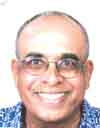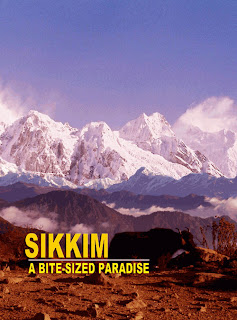January 12 OIOP issue - Philanthropy
The Art of Sharing
Of course, we have our own wealthy industry barons like Ratan Tata, Azim Premji, Narayana Murthy, who have been contributing from their personal wealth to improve the socio-economic condition of the masses here. However, philanthropic deeds of a few billionaires will not be enough to eradicate poverty or bridge the wide gap between India
At One India One People, we decided to ring in the New Year by doing our own bit of promoting philanthropy by doing an entire issue on the theme. Our expert writers give us their views on the art of sharing.
 In the lead article, Noshir H. Dadrawala, Chief Executive, CAP (Centre for Advancement of Philanthropy), a non-profit working in the niche area of helping all types of philanthropic organisations (donor or donee) in India stay legally compliant and well-governed, tells us how the concept of giving has evolved in India and how contemporary philanthropy is about promoting the welfare, happiness and culture of everyone in a society.
In the lead article, Noshir H. Dadrawala, Chief Executive, CAP (Centre for Advancement of Philanthropy), a non-profit working in the niche area of helping all types of philanthropic organisations (donor or donee) in India stay legally compliant and well-governed, tells us how the concept of giving has evolved in India and how contemporary philanthropy is about promoting the welfare, happiness and culture of everyone in a society. While we may not agree with donating 50 per cent of our personal wealth, it is imperative that new Indian models of giving are created to help high impact non-profit organisations achieve scale. The time has come for Indian millionaires and billionaires to provide these entities with not just recognition but also funding to tackle the complex issues fuelled by poverty, writes Deval Sanghvi, founder and CEO of
While we may not agree with donating 50 per cent of our personal wealth, it is imperative that new Indian models of giving are created to help high impact non-profit organisations achieve scale. The time has come for Indian millionaires and billionaires to provide these entities with not just recognition but also funding to tackle the complex issues fuelled by poverty, writes Deval Sanghvi, founder and CEO of  Sadhguru Jaggi Vasudev, yogi, visionary, humanitarian and prominent spiritual leader, says that Philanthropy could become an enterprise, rather than just about giving away a chunk of money and saying that it is done. Philanthropy also needs the benefit of human ingenuity, he adds.
Sadhguru Jaggi Vasudev, yogi, visionary, humanitarian and prominent spiritual leader, says that Philanthropy could become an enterprise, rather than just about giving away a chunk of money and saying that it is done. Philanthropy also needs the benefit of human ingenuity, he adds. Dr. Ravi Prakash Achanta, who has done extensive research in the area of Corporate Social Responsibility and corporate philanthropy, opines that bringing business and philanthropic interests into harmony creates a win-win situation for companies as well as for their philanthropic initiatives as it not only delivers far greater benefits to society and the people it is trying to help but also has a real impact on the company’s long-term success.
Dr. Ravi Prakash Achanta, who has done extensive research in the area of Corporate Social Responsibility and corporate philanthropy, opines that bringing business and philanthropic interests into harmony creates a win-win situation for companies as well as for their philanthropic initiatives as it not only delivers far greater benefits to society and the people it is trying to help but also has a real impact on the company’s long-term success.  Nisha Purushothaman, founder of Think Strategic that supports the communication, fundraising, and strategic requirements of voluntary organisations in
Nisha Purushothaman, founder of Think Strategic that supports the communication, fundraising, and strategic requirements of voluntary organisations in  Thryza Dow, NGO Relationship Manager with Samhita, an online portal for NGOs and CSR advisory service provider, writes that with the development sector going through a period of transformation and global knowledge and practices entering the Indian philanthropic scene, it is important to organise NGOs into an accredited association.
Thryza Dow, NGO Relationship Manager with Samhita, an online portal for NGOs and CSR advisory service provider, writes that with the development sector going through a period of transformation and global knowledge and practices entering the Indian philanthropic scene, it is important to organise NGOs into an accredited association. P. M. Kamath, formerly Professor of Politics, Mumbai University and currently Hon. Director, VPM’s Centre for International Studies, says that for individuals and non-profit organisations involved in social work in
P. M. Kamath, formerly Professor of Politics, Mumbai University and currently Hon. Director, VPM’s Centre for International Studies, says that for individuals and non-profit organisations involved in social work in  Philanthropy has always been regarded as an activity of the wealthy and not the middle class. But Ramakrishna N.K and Smita Ramakrishna, the founders of Rang
Philanthropy has always been regarded as an activity of the wealthy and not the middle class. But Ramakrishna N.K and Smita Ramakrishna, the founders of Rang Know India South India and comes to realise the wisdom in the words which describe forests as God’s first temples.
 Face to Face – Yashveer Singh, Founder and Director, NSEF (National Social Entrepreneurship Forum), a youth focused non-profit organisation, spoke to OIOP about the current trends in social entrepreneurship in
Face to Face – Yashveer Singh, Founder and Director, NSEF (National Social Entrepreneurship Forum), a youth focused non-profit organisation, spoke to OIOP about the current trends in social entrepreneurship in In the ‘General’ section, Jashwant H. Mehta, a strong advocator of ‘Presidential Democracy’ writes that instead of dividing bigger states for better governance, what we really need is to improve the quality of governance.
Great Indians:

A. P. Mitra (1927-2007) – Prof. Ashesh Prasad Mitra did pioneering work on the ionosphere and climate change and worth with distinction the mantle of his guru Prof. Sisir Kumar Mitra, FRS.
The issue also covers other thought-provoking and insightful regular columns on environment, current affairs, patriotism, culture and vedic maths.
If you wish to order a copy, write to oiopsub@fouressindia.com or call Nagesh Bangera – 022 -2 353 44 00










































